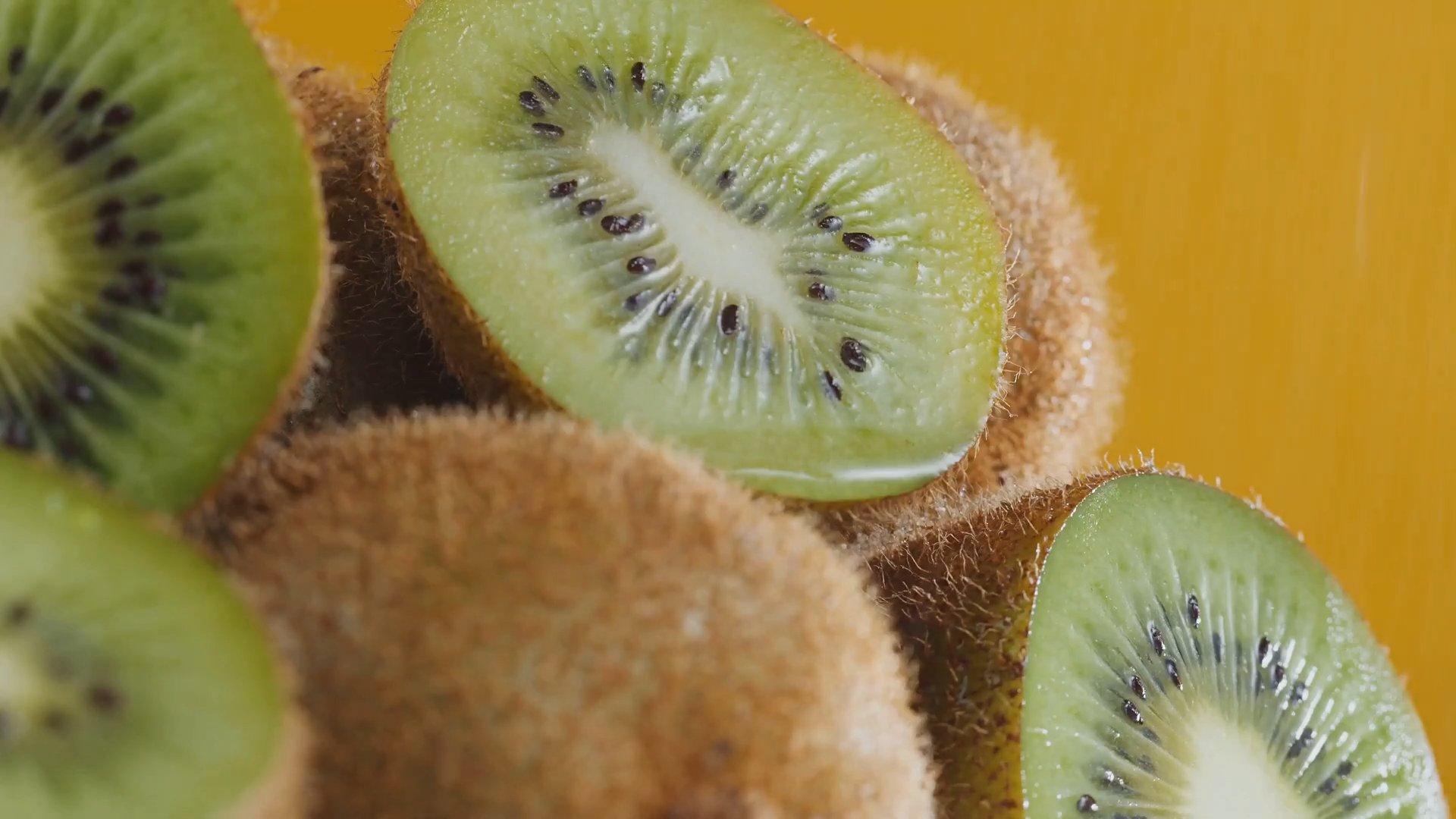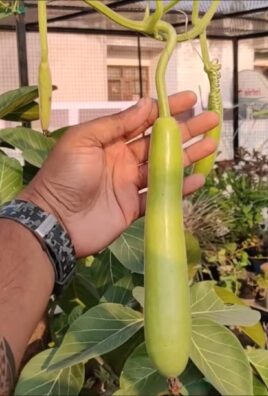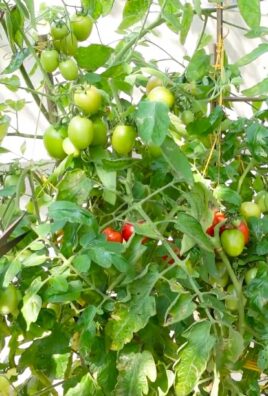Growing Kiwi Vines might seem like an exotic endeavor reserved for seasoned gardeners, but trust me, with a few clever tricks and a dash of DIY spirit, you can cultivate these fuzzy fruits right in your own backyard! Forget those expensive supermarket kiwis – imagine plucking your own sun-ripened, juicy delights straight from the vine.
The kiwi, originally known as the Chinese gooseberry, has a fascinating history. Hailing from China, it wasn’t until the early 20th century that New Zealanders recognized its commercial potential and rebranded it with the name of their national bird. Now, it’s a global favorite, and you can be part of its story!
Why bother with the effort of growing kiwi vines yourself? Well, for starters, homegrown kiwis taste infinitely better than store-bought ones. Plus, you’ll know exactly what went into growing them – no nasty pesticides or questionable practices. But more importantly, mastering this DIY project gives you a sense of accomplishment and connects you with nature in a truly rewarding way. I’m here to guide you through the process, sharing simple yet effective hacks that will transform your garden into a kiwi haven. So, let’s get our hands dirty and embark on this exciting gardening adventure together!

Growing Your Own Kiwi: A DIY Guide to Bountiful Harvests
So, you’re thinking about growing kiwis? Awesome! It’s a rewarding experience, and nothing beats the taste of a homegrown kiwi. It might seem a little daunting at first, but trust me, with a little patience and the right know-how, you’ll be enjoying your own fuzzy fruits in no time. This guide will walk you through everything you need to know, from choosing the right variety to harvesting your delicious kiwis.
Choosing Your Kiwi Variety
Before you even think about planting, you need to pick the right kiwi variety for your climate. Kiwis aren’t all created equal, and some are much hardier than others. Here’s a breakdown to help you decide:
* Hardy Kiwis (Actinidia arguta): These are the rockstars of cold climates! They can withstand temperatures way below freezing, making them perfect if you live in a colder region. The fruits are smaller than the fuzzy kiwis you find in the store, but they’re incredibly sweet and you can eat the skin! Popular varieties include ‘Issai’ (self-fertile), ‘Anna’, and ‘Ken’s Red’.
* Fuzzy Kiwis (Actinidia deliciosa): These are the classic, fuzzy kiwis you’re probably most familiar with. However, they’re not as cold-hardy as the hardy kiwis and are best suited for warmer climates with mild winters. ‘Hayward’ is the most common variety.
* Golden Kiwis (Actinidia chinensis): These kiwis have smooth skin and a golden flesh. They’re delicious, but also less cold-hardy than hardy kiwis.
Important Considerations:
* Climate: This is the most crucial factor. Research which varieties thrive in your USDA hardiness zone.
* Space: Kiwi vines are vigorous growers and need plenty of space. Hardy kiwis can grow 20-30 feet long, while fuzzy kiwis can reach even greater lengths.
* Pollination: Most kiwi varieties are dioecious, meaning they have separate male and female plants. You’ll need at least one male plant for every 6-8 female plants to ensure pollination and fruit production. However, some self-fertile varieties like ‘Issai’ are available.
* Taste Preference: Do you prefer the sweet, edible-skinned hardy kiwis or the classic fuzzy kiwi flavor?
Preparing the Planting Site
Kiwis need a sunny spot with well-drained soil. They’re heavy feeders, so amending the soil with plenty of organic matter is essential.
* Sunlight: Kiwis need at least 6-8 hours of direct sunlight per day.
* Soil: The soil should be well-draining and slightly acidic (pH 6.0-6.5). Kiwis don’t like “wet feet,” so avoid planting in areas where water tends to pool.
* Support Structure: Kiwi vines are climbers and need a strong support structure to grow on. A sturdy trellis, pergola, or fence will work well.
Planting Your Kiwi Vines
Now for the fun part! Here’s how to plant your kiwi vines:
1. Choose the Right Time: The best time to plant kiwis is in the spring after the last frost or in the fall before the first frost. This gives the plants time to establish their roots before the extreme temperatures of summer or winter.
2. Prepare the Planting Hole: Dig a hole that’s twice as wide and as deep as the root ball of your kiwi plant.
3. Amend the Soil: Mix the soil you removed from the hole with plenty of compost, well-rotted manure, or other organic matter. This will improve drainage, fertility, and water retention.
4. Plant the Kiwi: Gently remove the kiwi plant from its container and loosen any circling roots. Place the plant in the hole, making sure the top of the root ball is level with the surrounding soil.
5. Backfill the Hole: Fill the hole with the amended soil, gently tamping it down to remove any air pockets.
6. Water Thoroughly: Water the newly planted kiwi vine deeply to help settle the soil and encourage root growth.
7. Mulch: Apply a layer of mulch around the base of the plant to help retain moisture, suppress weeds, and regulate soil temperature. Use organic mulch like wood chips, straw, or shredded bark. Keep the mulch a few inches away from the stem of the plant to prevent rot.
8. Provide Support: Immediately after planting, attach the kiwi vine to the support structure. Use soft ties or twine to avoid damaging the stem.
Training and Pruning Your Kiwi Vines
Training and pruning are crucial for kiwi vine health and fruit production. Kiwis fruit on one-year-old wood, so proper pruning encourages new growth and maximizes your harvest.
Training Young Vines
The goal of training young vines is to establish a strong framework.
1. Select a Leader: Choose the strongest, most vigorous shoot and train it to grow vertically up the support structure. This will become the main trunk of the vine.
2. Remove Suckers: Regularly remove any suckers that sprout from the base of the plant. These will compete with the main vine for resources.
3. Train Laterals: As the main vine grows, train lateral branches (side shoots) horizontally along the support structure. These laterals will eventually produce fruiting spurs.
4. Pinch Back Tips: Pinch back the tips of the lateral branches to encourage them to branch out and form more fruiting spurs.
Pruning Mature Vines
Pruning mature vines is essential for maintaining fruit production and preventing the vine from becoming overgrown.
1. Timing: The best time to prune kiwis is in late winter or early spring, before the new growth begins.
2. Remove Dead, Damaged, or Diseased Wood: Start by removing any dead, damaged, or diseased branches. This will improve air circulation and prevent the spread of disease.
3. Thin Out Crowded Branches: Thin out any crowded branches to allow more sunlight to reach the fruiting spurs.
4. Shorten Fruiting Spurs: Shorten the fruiting spurs to 6-8 inches long. This will encourage the development of new fruiting wood.
5. Remove Excess Growth: Remove any excess growth that is not needed for fruit production. This will help to keep the vine manageable and prevent it from becoming overgrown.
6. Male Vine Pruning: Male vines need less pruning than female vines. Simply remove any dead, damaged, or diseased wood and thin out any crowded branches.
Watering and Fertilizing
Kiwis need consistent watering, especially during dry periods. They also benefit from regular fertilization.
* Watering: Water deeply and regularly, especially during the growing season. Avoid overwatering, as this can lead to root rot. A good rule of thumb is to water when the top inch of soil feels dry to the touch.
* Fertilizing: Fertilize kiwis in the spring with a balanced fertilizer. You can also amend the soil with compost or well-rotted manure. Avoid over-fertilizing, as this can lead to excessive vegetative growth at the expense of fruit production.
Pest and Disease Control
Kiwis are generally relatively pest and disease-free, but it’s still important to be vigilant.
* Pests: Common pests include spider mites, aphids, and Japanese beetles. Control these pests with insecticidal soap or horticultural oil.
* Diseases: Root rot is the most common disease affecting kiwis. Prevent root rot by planting in well-drained soil and avoiding overwatering. Fungal diseases can also occur, especially in humid climates. Treat fungal diseases with a fungicide.
* Deer and Rabbits: Protect young kiwi vines from deer and rabbits with fencing or tree guards.
Harvesting Your Kiwis
Harvesting is the culmination of all your hard work!
1. Timing: Kiwis are typically harvested in the fall, before the first frost. The exact timing will depend on the variety and your climate.
2. Ripeness: Kiwis are ripe when they soften slightly to the touch. You can also check the sugar content with a refractometer.
3. Harvesting Technique: Gently twist the kiwis off the vine. Be careful not to damage the fruit.
4. Storage: Kiwis can be stored in the refrigerator for several weeks. They will continue to ripen after they are harvested. To speed up ripening, place the kiwis in a paper bag with an apple or banana.
Troubleshooting Common Problems
Even with the best care, you might encounter some problems along the way. Here are some common issues and how to address them:
* No Fruit Production: This is often due to a lack of pollination. Make sure you have a male plant for every 6-8 female plants. If you have a self

Conclusion
So, there you have it! Growing kiwi vines at home might seem like a daunting task at first, but with a little patience, the right knowledge, and a dash of dedication, you can transform your garden into a thriving kiwi haven. This DIY trick, focusing on proper soil preparation, strategic pruning, and consistent watering, is truly a game-changer for anyone dreaming of harvesting their own sweet and tangy kiwis.
Why is this a must-try? Because store-bought kiwis, while convenient, simply can’t compare to the flavor and satisfaction of enjoying fruit you’ve nurtured yourself. Plus, you’ll know exactly what went into growing them – no mystery pesticides or long-distance transportation concerns. You’re getting the freshest, most flavorful kiwis possible, straight from your backyard. Beyond the taste, growing kiwi vines adds a beautiful, lush element to your landscape, providing shade and visual interest throughout the year. Imagine the envy of your neighbors as they watch your vines flourish!
But don’t stop there! Feel free to experiment with different kiwi varieties to find your perfect match. ‘Hayward’ is a classic choice, but ‘Anna’ and ‘Issai’ are self-fertile options that are great for smaller gardens or those who prefer not to deal with separate male and female plants. You can also try training your vines on different structures – arbors, pergolas, or even along a sturdy fence. Get creative and tailor the growing experience to your specific space and preferences.
Consider companion planting to further enhance your kiwi vines’ health and productivity. Planting nitrogen-fixing plants like legumes nearby can naturally enrich the soil. Marigolds can help deter pests, and herbs like basil can attract beneficial insects.
Don’t be afraid to get your hands dirty and embrace the learning process. Growing kiwi vines is a rewarding journey, and even if you encounter a few challenges along the way, the sweet taste of success will make it all worthwhile.
We wholeheartedly encourage you to give this DIY trick a try. Start small, be patient, and remember to document your progress. Take pictures, keep notes, and most importantly, have fun! And once you’ve harvested your first batch of homegrown kiwis, we’d love to hear about your experience. Share your tips, tricks, and triumphs in the comments below. Let’s build a community of kiwi-growing enthusiasts and help each other cultivate the most delicious and abundant harvests possible. Your success story could inspire others to embark on their own kiwi-growing adventures! So, what are you waiting for? Grab your gardening gloves and get ready to grow some amazing kiwis!
Frequently Asked Questions (FAQ)
What kind of soil is best for growing kiwi vines?
Kiwi vines thrive in well-drained, slightly acidic soil with a pH between 6.0 and 7.0. They prefer soil that is rich in organic matter. Before planting, amend your soil with compost, well-rotted manure, or other organic amendments to improve drainage and fertility. Avoid heavy clay soils, as they can become waterlogged and lead to root rot. If you have clay soil, consider planting your kiwi vines in raised beds or containers. A soil test can help you determine the pH and nutrient levels of your soil and guide you in making the necessary amendments.
How much sunlight do kiwi vines need?
Kiwi vines require at least 6-8 hours of direct sunlight per day to produce abundant fruit. Choose a planting location that receives full sun, especially during the morning hours. While they can tolerate some afternoon shade, too much shade will reduce fruit production and can make the vines more susceptible to diseases.
How often should I water my kiwi vines?
Kiwi vines need consistent moisture, especially during the growing season. Water deeply and regularly, especially during dry spells. Avoid overwatering, as this can lead to root rot. A good rule of thumb is to water when the top inch of soil feels dry to the touch. Mulching around the base of the vines can help retain moisture and suppress weeds. During the dormant season, reduce watering frequency.
Do I need both male and female kiwi plants to get fruit?
Yes, most kiwi varieties are dioecious, meaning they have separate male and female plants. You will need at least one male plant for every 6-8 female plants to ensure proper pollination and fruit production. The male plant provides the pollen necessary for the female plants to develop fruit. However, some self-fertile kiwi varieties, such as ‘Issai’ and ‘Anna’, do not require a male plant. Be sure to check the specific requirements of the kiwi variety you choose.
When is the best time to plant kiwi vines?
The best time to plant kiwi vines is in the spring or fall. This allows the vines to establish their root systems before the extreme temperatures of summer or winter. When planting, dig a hole that is twice as wide as the root ball and just as deep. Gently loosen the roots before placing the plant in the hole. Backfill with soil and water thoroughly.
How do I prune kiwi vines?
Pruning is essential for maintaining the health and productivity of kiwi vines. Prune during the dormant season (late winter or early spring) to remove dead, damaged, or crossing branches. Kiwi vines produce fruit on one-year-old wood, so focus on pruning to encourage new growth. Remove any suckers that grow from the base of the plant. Train the vines onto a sturdy support structure, such as a trellis or arbor.
What are some common pests and diseases that affect kiwi vines?
Kiwi vines can be susceptible to pests such as spider mites, aphids, and scale insects. Regularly inspect your vines for signs of infestation and take appropriate action, such as spraying with insecticidal soap or neem oil. Common diseases include root rot, botrytis, and phytophthora. Proper soil drainage and good air circulation can help prevent these diseases.
How long does it take for kiwi vines to produce fruit?
It typically takes 3-5 years for kiwi vines to start producing fruit. Be patient and continue to provide proper care, including watering, fertilizing, and pruning. The first few years are crucial for establishing a strong root system and developing healthy vines.
How do I know when my kiwis are ripe?
Kiwis are typically harvested in the fall, before the first frost. The fruit is ripe when it yields slightly to gentle pressure. You can also test the sugar content using a refractometer. Kiwis can be stored in the refrigerator for several weeks after harvesting.
Can I grow kiwi vines in containers?
Yes, you can grow kiwi vines in containers, especially if you have limited space. Choose a large container with good drainage and use a well-draining potting mix. Dwarf or self-fertile varieties are best suited for container growing. Provide a sturdy trellis or support structure for the vines to climb. Remember to water and fertilize regularly, as container-grown plants tend to dry out and deplete nutrients more quickly.





Leave a Comment